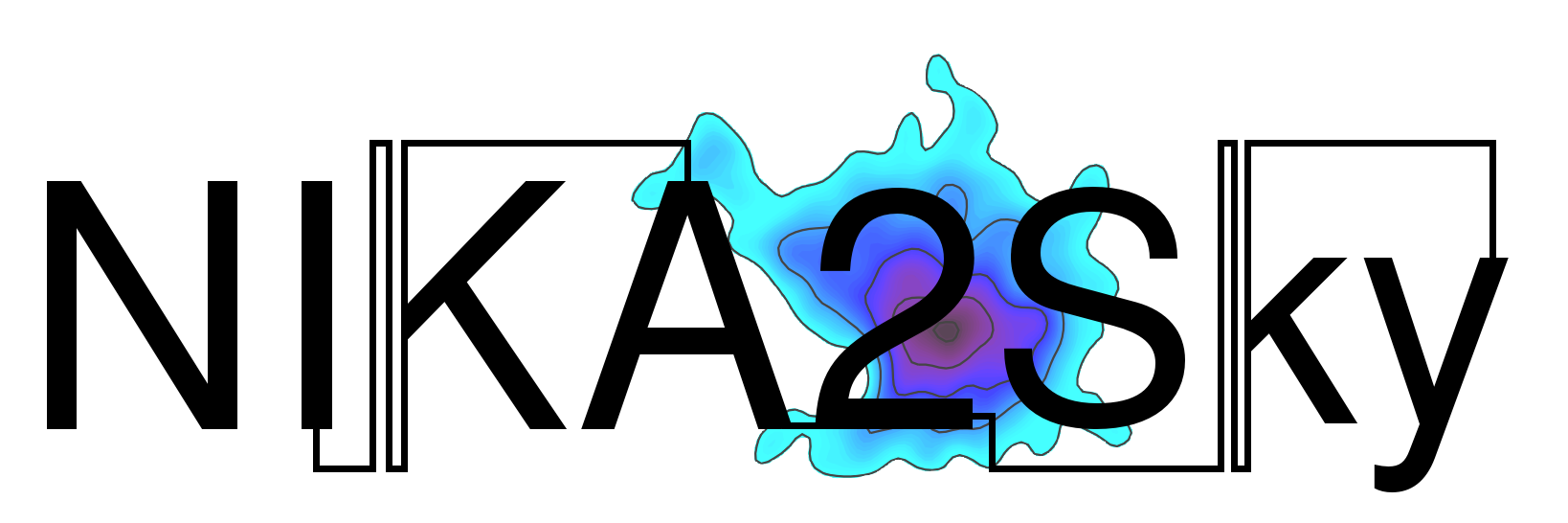The NIKA2 SZ Large Program
High-resolution SZ observations of a large sample of clusters of galaxies
Scientific contextClusters of galaxies constitute powerful tools to study cosmology as their number and distribution in mass and redshift is dependent of the geometry of the Universe. Cosmological parameters have been constrained by using cluster counts, as a function of redshift and mass, for a sample of clusters identified by the Planck Satellite, the Atacama Cosmology Telescope (ACT) and the South Pole Telescope (SPT).Such cosmological studies require to estimate the cluster mass from direct observables, such as: the X-ray luminosity, which is related to the square of the electronic density in the intra-cluster medium (ICM), and the thermal Sunyaev-Zel'dovich (tSZ) signal, which is proportional to the electronic pressure integrated along the line of sight. As the tSZ effect produces a distortion of the electromagnetic spectrum of the cosmic microwave background, via an inverse Compton scattering with hot electrons in the ICM, its surface brightness does not suffer from redshift dimming and its magnitude is expected to be closely related to the total cluster mass. Hence, tSZ effect enables the study of clusters up to high redshift as long as we have the appropriate angular resolution. At present, the systematic uncertainties due to the astrophysics of the hot intra-cluster gas affect the precision on the mass-observable relations and thereby limit the cluster derived cosmological constraints. Improving our knowledge of the physical properties of the population of galaxy clusters across cosmic times is mandatory to get rid of these biases and uncertainties. The thermal pressure and entropy of the ICM are key quantities for this endeavor. Hence, bringing cluster cosmology to the precision era requires sub-arcminute tSZ observations for which the NIKA2 camera is the most powerful existing tool. The NIKA2 SZ Large ProgramThe NIKA2 SZ Large Program (LP) is part of the NIKA2 guaranteed time, allocated by the IRAM scientific committee to the NIKA2 consortium. 300 hours of observations have been granted for 50 clusters that will be observed with NIKA2 at the IRAM 30-m telescope in the next five years.The main objective of the NIKA2 SZ LP is to study the thermodynamical properties of a representative sample of SZ-selected (from Planck and ACT) clusters of galaxies at intermediate and high redshift (0.5< z < 0.9) spanning one order of magnitude in mass. The high-resolution follow-up of SZ-discovered clusters will allow us, in combination with XMM-Newton X-ray data, to provide high quality deliverables in terms of radial profiles (density, pressure, mass, temperature, entropy). They are essential for a full understanding of the galaxy cluster observable-mass relation that will allow us to probe cluster physics and leverage large survey samples to constrain cosmology. The NIKA2 SZ Large Program has officially started in Oct. 2017, with the first official pool of NIKA2. A pilot study with NIKANIKA2 SZ capabilities have been demonstrated through a pilot study conducted with its pathfinder, NIKA, a prototype of NIKA2 that has been operated at the IRAM 30-m telescope from 2012 to 2015. Its field of view was smaller (1.8 arcmin) due to the reduced number of KIDs (356). In order to validate the use of a KID-based camera for SZ science, we have observed six clusters of galaxies and combined SZ data with X- ray data to study their thermodynamical properties.The NIKA SZ data have been publicly released on 2017 Nov 20th. |

